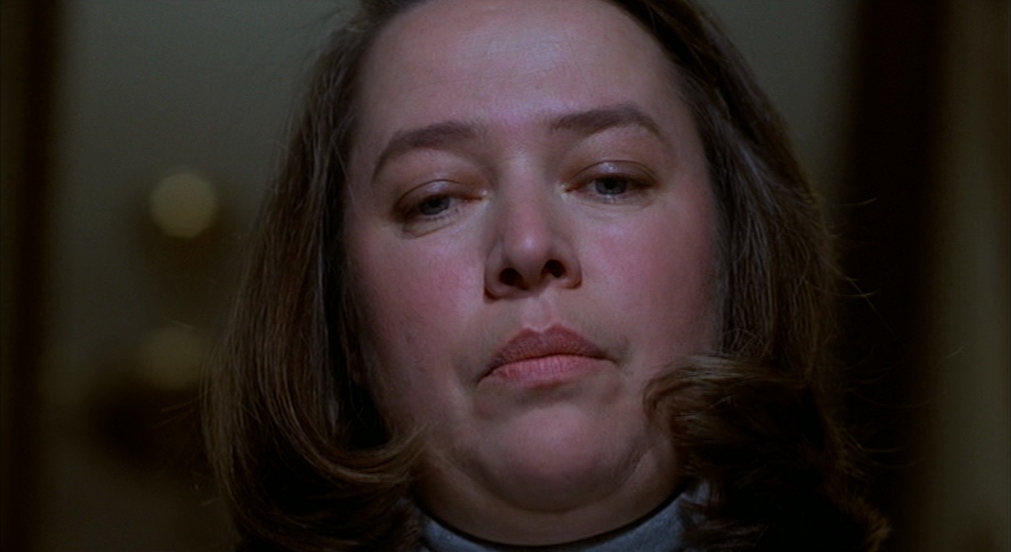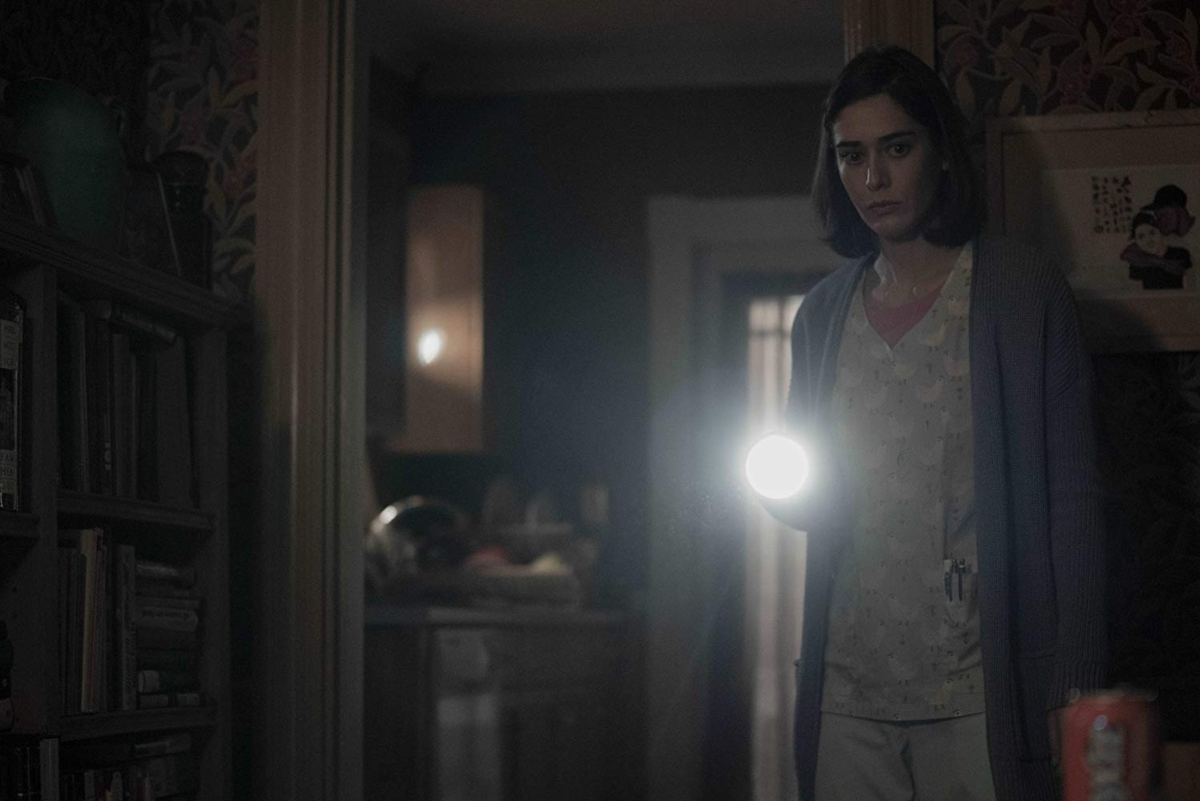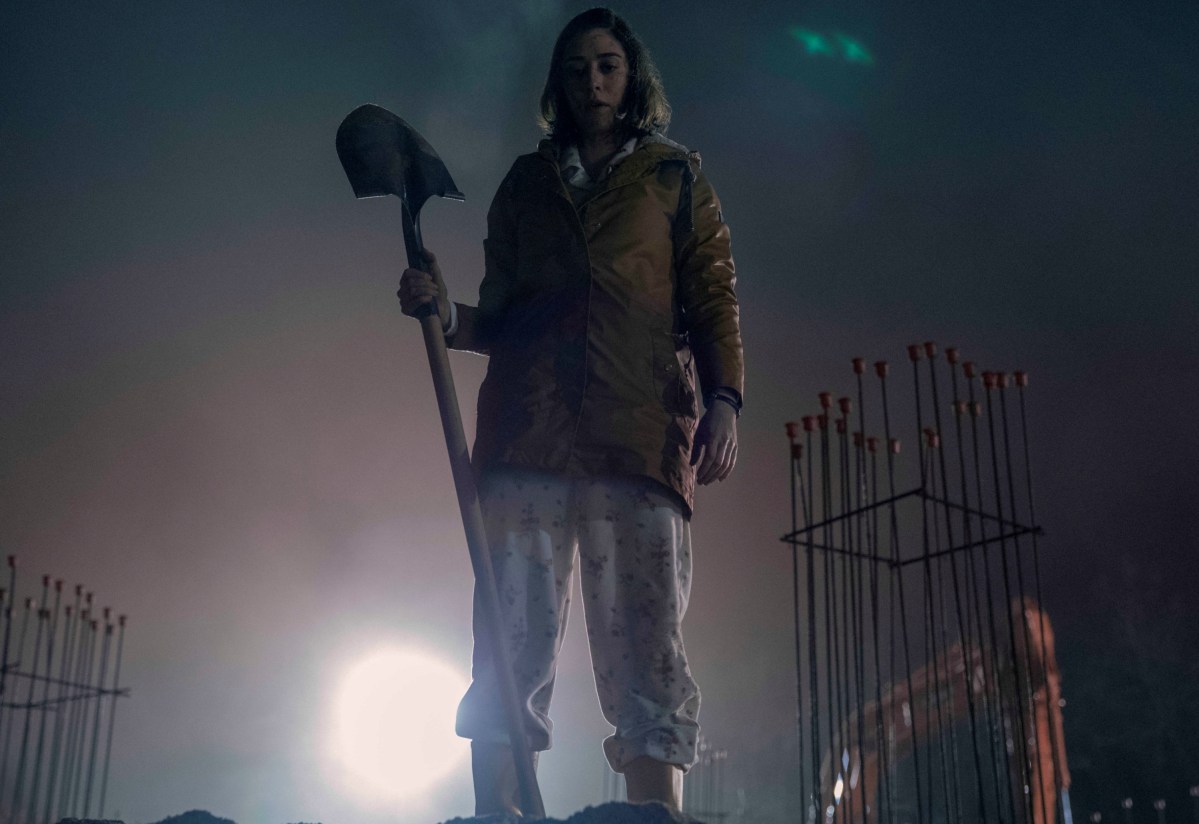The first three episodes of Castle Rock season two are up on Hulu, and the mother of female fandom has arrived in Castle Rock! No, I’m not talking about Bjo Trimble, but Queen Misery herself, Annie Wilkes (Lizzie Caplan). After driving cross country with her daughter Joy (Elsie Fisher), they have a car accident and end up stranded in the perennially haunted town.
But this isn’t the same Annie Wilkes that kidnapped Paul Sheldon in Stephen King’s original ode to the terror inspired by female fandom. First of all, she has a daughter she’s hell bent on protecting. Second, we have yet to see any trace of the Misery novels that triggered her obsessive, or “fan like” tendencies. Instead, she is focused on survival (fleeing Joy’s father) and getting access to the medication she needs to treat her mental illness (peak 2019).
However, her prim nature and abhorrence of swearing is still very much intact. She refuses to let her daughter have access to a cell phone or wifi (though the real reasons for that extend beyond merely wanting to shelter her daughter from the horrors of the world). This is an Annie that hasn’t completely self-isolated and succumbed. She is fighting (sometimes losing, but still fighting) her delusions instead of becoming lost in them.
It’s interesting to take a character like Annie Wilkes, in 2019, and place her in not just a central role, but in the role of the apparent heroine (it is Castle Rock, after all, so this could change with a few more episodes). This show is predicated on the majority of its audience being so familiar with the works of King that they will see a character’s name and a lightbulb will flash, and the audience will either fill in necessary backstory or jump to conclusions about that character’s nature or function within the story … and then see that subverted.
In the way that the noble Sheriff Alan Pangborn, who in the books was able to defend his town from Leland Gaunt and other monsters, became a washed up old drunk in season one, so now has Annie Wilkes transformed from every male author’s worst nightmare (the dowdy, crazed, lustful—and don’t forget dowdy!—female fan) to a woman who is unwell but still trying to do right by the child in her care.

(image: MGM)
So let’s take a look at the original Annie, and Misery as a whole, for a second. King’s original 1987 novel was a way for him to exorcise his frustration with his fans when they rejected his fantasy novel The Eyes of the Dragon for lacking the horror elements he was known for, and also to write about his struggles with addiction. “Annie was my drug problem, and she was my number-one fan. God, she never wanted to leave.” (Stephen King, The Art of Fiction, No. 189)
Unfortunately however, Kathy Bates’ chilling performance also tapped into the cultural terror and disgust targeted at female fans. Even though historically, female fans are responsible for things like … saving Star Trek and, say, dictating major shifts in popular culture (going all the way back to “Lisztomania” in the 1800s and then some), they have always been categorized and stereotyped as “unhinged,” “obsessed,” and my favorite sexist medical term, “hysterical.” The female fan is, to the horror of a patriarchal society, seemingly uncontrollable, which means they must be monstrous. And if they are deemed “hysterical,” it must mean they are psychologically unwell.
And you see all of that in the dynamic that plays out between author Paul Sheldon (James Caan) and Annie Wilkes. The movie is entirely from his point of view, and you see him progress from politely annoyed, to condescending, to desperately placating, to terrified in his interactions with her. He views Annie not as a person but as an obstacle that has become increasingly difficult to overcome. She knows his work better than he does, and in fact, the heroine of his novels means far more to her than she does to him (because he feels the romance genre is less than what his great male literary brain is capable of).
This is most evident in the scene where her rage erupts at his initial lazy resurrection of the character he killed off. (Funnily enough, I don’t think 1990 Annie Wilkes could exist today purely because she would be ruling the roost of the Misery tags of an Archive of Our Own. Fanfic heals all!) This rage is a key element to the stereotype of the female fan. Female anger (and let’s be real, desire) unleashed is a rejection of the control of the patriarchal system in which we live, which is what makes it so terrifying (unconsciously or otherwise) to the men in charge.
This is at the heart of what makes Bates’ Annie truly brilliant. The audience watches her, with her modest, almost nun-without-the-habit dress, and her “fudges” and “cockadoodies,” struggle to stay in control and perform womanhood the way she has been taught is proper and good, unleashing first trickles and then fountains of fury as her grip on herself, and Paul, weakens. In part, this is due to her implied mental illness. The film never makes it explicit that she is bipolar, but it shows her swings from manic and irritable to what she calls “having the blues,” in which she is in a near catatonic state of depression.
Overall, I do think there is enough, just in Bates’ portrayal, to view Misery as a potentially feminist horror classic. Unfortunately, because it’s framed from Paul (and King’s) perspective, its lasting impact culturally was to give us the modernized trope of the “psychotic” female fan (just look at the character “Becky” on Supernatural if you want to see Misery‘s lasting impact).

(image: Hulu)
That’s why I think this new 2019 Annie Wilkes is so important—at least, to me, as a woman living within many popular fandoms. Castle Rock makes a pivotal narrative choice: Annie’s plot lines are from Annie’s perspective. We are given explicit access to the interior of Annie’s mind, emotions, and memories.
We watch her try to medicate and be mentally healthy for her daughter. We see her try to fight off what she thinks are hallucinations (but this is Castle Rock, so they probably aren’t), and we are able to empathize with her struggle and its ominous origins. She is still Annie Wilkes, however. When confronted, she still has violent outbursts. She still tries to maintain a rigid control of her language. And while her obsessive fanaticism has a new focus—her daughter—it’s still there. At the core, she is still the same Annie.
It remains to be seen what Annie’s true character trajectory will be. After all, she’s in haunted-ass Castle Rock, killed a man (who threatened her daughter), and has already discovered the vampire pit at the bottom of the neighboring Jerusalem’s Lot. (Annie Wilkes, Vampire Hunter? Sign me up!) And we are only three episodes in. She might very well become the Annie Wilkes we meet in Misery, but for now, I relish the subversion of the very old, and very tired, tropes that plague portrayals of the female fan.
(featured image: Dana Starbard/Hulu
Want more stories like this? Become a subscriber and support the site!
—The Mary Sue has a strict comment policy that forbids, but is not limited to, personal insults toward anyone, hate speech, and trolling.—










Published: Oct 25, 2019 03:25 pm